What does it take to recruit and retain talented and diverse faculty? Listening, analysis and amping up helps build a campus where career advancement and job satisfaction is attainable for all.
"If you want to build a ship, don’t drum up people together to collect wood and don’t assign them tasks and work, but rather teach them to long for the endless immensity of the sea."
The words of journalist and pioneering aviator Saint-Exupery exemplify the spirit behind the Advanced Matrix Process for University Programs (AMP-UP) at Michigan Technological University. First piloted in November 2015, AMP-UP is a highly collaborative, inclusive structure to broadly engage the campus community in creating an environment that welcomes, values and supports women, underrepresented minority individuals and those who have traditionally experienced an excess of bias that accumulates into measurable disadvantages for career progress and job satisfaction.
“AMP-UP began as a vision put forth by our NSF ADVANCE team after a year-long, highly reflective process, assessing career progression of women and under-represented faculty," says Adrienne Minerick, associate dean for research and innovation and assistant to the provost for faculty development.
The main group of "original, die-hard advocates," Patricia Sotirin, Sonia Goltz and Minerick were joined by other passionate individuals, including but not limited to Anita Quinn, Andrew Storer, Audrey Mayer and Jacqueline Huntoon.
"AMP-UP has grown into a highly inclusive team that has undertaken continuous improvement projects to improve our workplace," Minerick says, explaining that some projects have been quickly institutionalized, like the Early Career Management committees. Others are still in development, like the Male Advocates and Allies effort or the use of WebFocus to transparently share progress. "Over time, this grassroots effort—with significant administrative support—will have lasting positive impacts on Michigan Tech,” says Minerick.
Charting and accelerating equity in AMP-UP
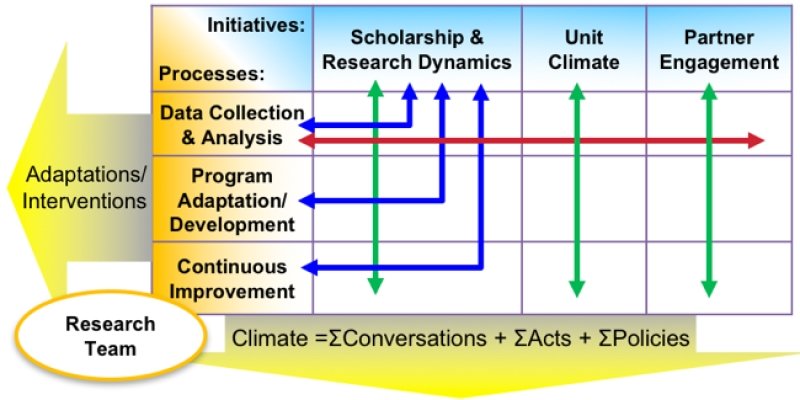
AMP-UP launched with three main teams to work on initiatives (Figure 1): scholarship and research dynamics, unit climate and partner engagement. These initiatives were selected based on data analysis that shows Michigan Tech has made progress toward equitable conditions, but that inequities remain across all advancement indicators (representation, salaries, start-up packages, space, promotion, retention and leadership. See Figure 2).
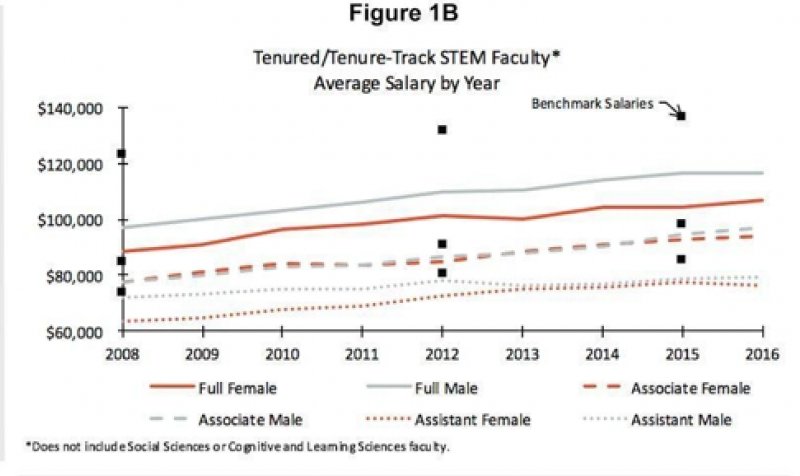
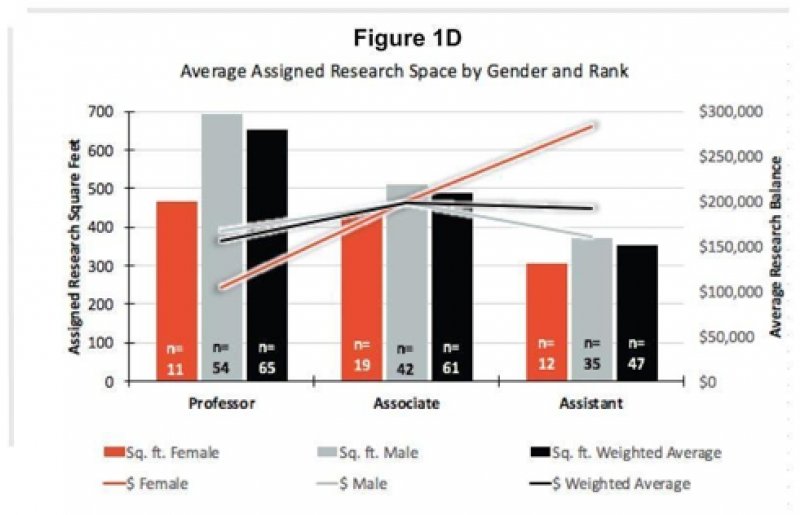
For example, women comprised 18 percent of STEM faculty in 2008 (46 women out of 260) and only grew to 23 percent in 2016 (63 of 278). To better understand some of the reasons behind this slow progress, the indicator data was supplemented with three interview studies: an externally conducted study of eight women who left the University between 2011-2015; interviews with department chairs; and focus group discussions and phone interviews with dual career faculty and their partners. Patterns that emerged indicate the need to focus on equal opportunity to build credentials in scholarship and research dynamics, inclusive workplaces in unit climate and career opportunities and growth for significant others in partner engagement.
Moving towards an inclusive campus
Academia is notoriously slow to change. So AMP-UP’s vision to broadly engage the community necessitated a continuous improvement model; an ongoing—self reflective data gathering and analysis, along with strategic interventions and programming—will sow the seeds of change. In their matrix, the AMP-UP teams outlined the three stages of the continuous improvement cycle; output from the process are interventions and programs to educate or start new processes. AMP-UP concurrently maintains ongoing conversations, activities and policy updates that improve the campus climate for all.
AMP-UP teams have made considerable progress over the last two years. At the President’s October Campus Forum, each initiative team reported on their projects and progress. Posters provided additional information and are available on the ADVANCE webpage. Attendees were also asked to rate the importance of ongoing and future efforts.
| Criteria | Importance |
|---|---|
|
Expansion of Partner Cost-share Pilot |
19 |
|
Review Action Items from the Unit Climate Survey |
14 |
|
Advocates and Allies Program (vetted intervention relating to sexism in the workplace) |
14 |
|
Review of Family Friendly Policies |
11 |
|
Continued Focus Groups in Support of Ideas that Spring Forth from the Unite Climate Survey |
8 |
|
Embed People Highly Skilled in Continuous Improvement Using Lean Principles on the AMP-UP Teams |
5 |
|
Collective Advertising and Website Pilot |
2 |
| Criteria | Importance |
|---|---|
|
Personalized Career Development Plans |
15 |
|
Clearly Define “Faculty Service” within each Academic Unit |
12 |
|
Career Development: Review Non-Tenure Promotion Path; Lecturers, Instructors, Professor of Practice |
9 |
|
Recruitment Process for Executives and Academic Administrators |
9 |
|
Consider Academic/Promotional Track for Librarians |
8 |
| Criteria | Importance |
|---|---|
|
Identify and Build Reports that are Generated in Time for Key Decisions Aligned with the University's Strategic Plan |
24 |
|
Align Metrics to Track University Goals Utilizing WebFocus |
13 |
|
Industry Engagement Kaizen (see additional poster for more information) |
10 |
|
Build a Mechanism to Share the Analyzed Data so that others can learn |
10 |
|
Standardize University Level Metric Collection, Archiving and Reporting |
6 |
|
Develop an Annual Communication Mechanism to Inform the Community about the Data Available |
5 |
|
Sabbatical Retention Survey/Intervention |
3 |
|
Revamp the Reporting Screen in Digital Measures to Help Close the Loop on Sabbatical Leaves |
2 |
Michigan Technological University is a public research university founded in 1885 in Houghton, Michigan, and is home to more than 7,000 students from 55 countries around the world. Consistently ranked among the best universities in the country for return on investment, Michigan’s flagship technological university offers more than 120 undergraduate and graduate degree programs in science and technology, engineering, computing, forestry, business and economics, health professions, humanities, mathematics, social sciences, and the arts. The rural campus is situated just miles from Lake Superior in Michigan's Upper Peninsula, offering year-round opportunities for outdoor adventure.


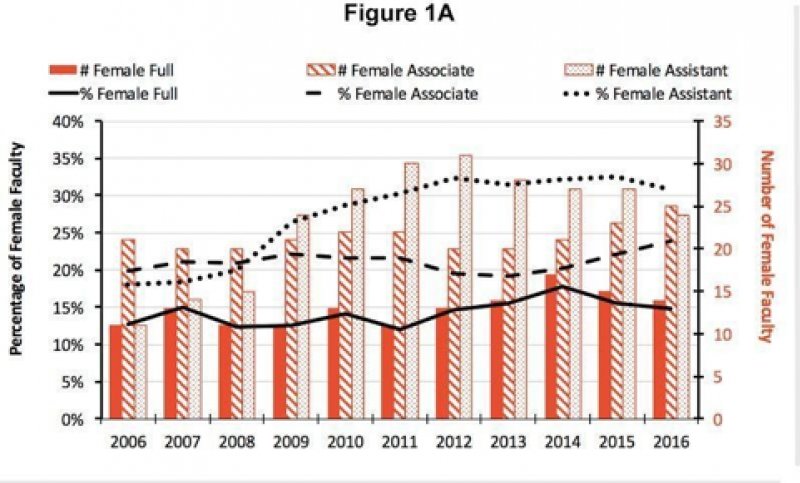
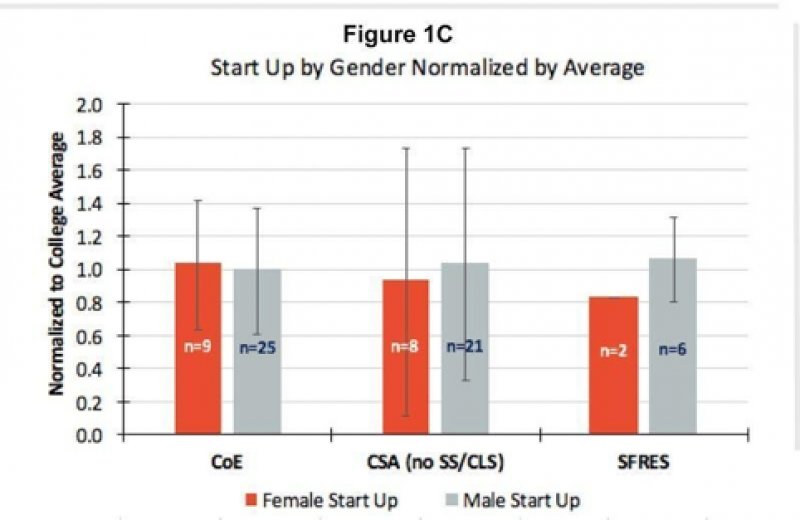

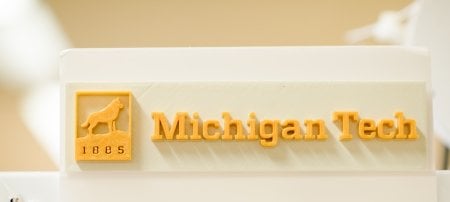
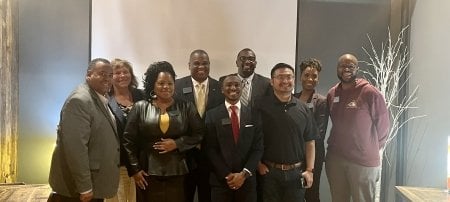

Comments